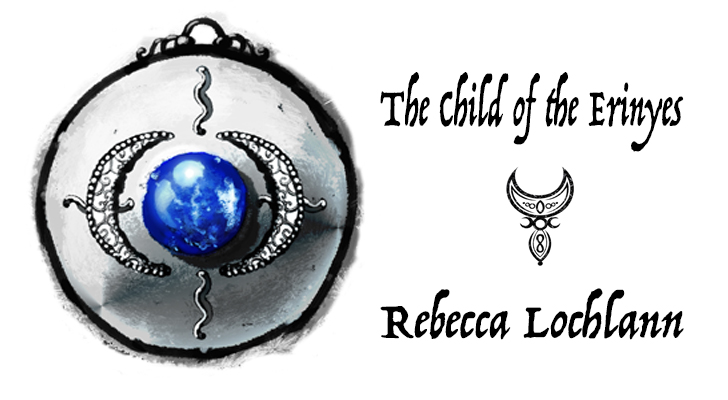Category Archives: The year king
The year-king: his year and the later “Great Year”
From The Greek Myths, by Robert Graves:
14: Once the relevance of coition to child-bearing had been officially admitted, man’s religious status gradually improved, and winds or rivers were no longer given credit for impregnating women. The tribal Nymph, it seems, chose an annual lover from her entourage of young men, a king to be sacrificed when the year ended; making him a symbol of fertility, rather than the object of her erotic pleasure. His sprinkled blood served to fructify trees, crops and flocks, and his flesh was torn and eaten raw by the Queen’s fellow-nymphs – priestesses wearing the masks of bitches, mares, or sows. Next, in amendment to this practice, the king died as soon as the power of the sun, with which he was identified, began to decline in the summer; and another young man, his twin, or supposed twin – a convenient ancient Irish term is ‘tanist’ – then became the Queen’s lover, to be duly sacrificed at midwinter and, as a reward, reincarnated in an oracular serpent.

Prince of Lilies from: https://en.wikipedia.org/wiki/List_of_Aegean_frescos See Below
15: The number seven acquired peculiar sanctity, because the king died at the seventh full moon after the shortest day.
18: When the shortness of the king’s reign proved irksome, it was agreed to prolong the thirteen month year to a Great Year of one hundred lunations, in the last of which occurs a near-coincidence of solar and lunar time. But since the fields and crops still needed to be fructified, the king agreed to suffer an annual mock death and yield his sovereignty for one day – the intercalated one, lying outside the sacred sidereal year – to the surrogate boy-king, or interrex, who died at its close, and whose blood was used for the sprinkling ceremony. Now the sacred king either reigned for the entire period of a Great Year, with a tanist as his lieutenant; or the two reigned for alternate years; or the Queen let them divide the queendom into halves and reign concurrently. The king deputized for the Queen at many sacred functions, dressed in her robes, wore false breasts, borrowed her lunar axe as a symbol of power, and even took over from her the magical art of rain making. His ritual death varied greatly in circumstance; he might be torn to pieces by wild women, transfixed with a sting-ray spear, felled with an axe, pricked in the heel with a poisoned arrow, flung over a cliff, burned to death on a pyre, drowned in a pool, or killed in a pre-arranged chariot crash. But die he must. A new stage was reached when animals came to be substituted for boys at the sacrificial altar, and the king refused death after his lengthened reign ended. Dividing the realm into three parts, and awarding one part to each of his successors, he would reign for another term; his excuse being that a closer approximation of solar and lunar time had now been found, namely nineteen years, or 325 lunations. The Great Year had become a Greater Year.
23: The queen-mother of the state, as Ngame’s representative, performs an annual sacred marriage with Odomankoma’s representative: namely her chosen lover whom, at the close of the year, the priests murder, skin, and flay. The same practice seems to have obtained among the Greeks.
38: 6.3: during the king’s sacrifice, designed to fructify the cornfields and orchards, the goddess’s priestesses wore menacing Gorgon masks to frighten away profane visitors. His genitals were thrown into the sea to encourage fish to breed.
52: A hero, as the word indicates, was a sacred king who had been sacrificed to Hera, whose body was safely under the earth, and whose soul had gone to enjoy her paradise at the back of the North Wind. His golden apples were passports to this paradise.
57: Dionysus began as a sacred king whom the goddess ritually killed with a thunderbolt in the 7th month from the winter solstice, and whom her priestesses devoured.
93: the title Hecate (one hundred) apparently refers to the hundred lunar months of the king’s reign, and to the hundredfold harvest. The king’s death by a thunderbolt, or by the teeth of horses, or at the hands of his tanist, was his common fate in primitive Greece.
108: Dryas (oak) was the oak-king, annually killed. The trimming of his extremities served to keep his ghost at bay, and the wanton felling of a sacred oak carried the death penalty.

Double axe Public Domain from: https://commons.wikimedia.org/wiki/File:Small_golden_double_head_minoan_axe_archmus_Heraklion.jpg
114: As sacred king, he was struck by a thunderbolt – that is, killed with a double-axe – in an oak grove at the summer solstice, and then dismembered by the Maenads of the bull-cult, like Zagreus; or of the stag-cult, like Actaeon.
115: A sacred king necessarily suffered dismemberment.
126: In pre-Hellenic myth, the goddess chases the sacred king and, although he goes through his seasonal transformations, counters each of them in turn with her own, and devours him at the summer solstice.
138: the twins’ mutual murder recalls the eternal rivalry for the love of the White Goddess between the sacred king and his tanist, who alternately meet death at each other’s hands.
138: the twins’ mutual murder recalls the eternal rivalry for the love of the White Goddess between the sacred king and his tanist, who alternately meet death at each other’s hands. The column, on which the Death-in-Life Goddess perches, marks the height of summer when the sacred king’s reign ends and the tanist’s begins. (At the heliacal rising of two-headed Sirius.)
176: The oak-king met his death in Athene’s honor, and all oak-kings fell beneath the double axe. Their bodies were usually roasted in a bonfire.
204: it was a widespread custom to bury the sacred king’s head at the approaches to a city, and thus protect it against invasion.
205: The Thesmophoria were agricultural orgies celebrated at Athens, in the course of which the severed genitals of the sacred king or his surrogate were carried in a basket; these were replaced in more civilized times by phallus-shaped loaves and live serpents.
209: As an oak-king with mistletoe genitals, representing the thunder-god, he ritually married the rain-making Moon-goddess; and was then scourged, so that his blood and sperm would fructify the earth, beheaded with an axe, emasculated, spread-eagled to a tree, and roasted; after which his kinsmen ate him sacramentally.
211: myth showing how an Aeolian chief invaded Elis, and accepted the consequences of marrying the Pelasgian Moon-goddess Hera’s representative. When his reign ended he was duly sacrificed and awarded a hero shrine at Olympia.
255: Wild Women maddened with hippomanes, either a herb, or the slimy vaginal tissue of a mare in heat, or the black membrane cut from the forehead of a new-born foal closed in on a sacred king by the seashore at the end of his reign. Their skirts were hoisted as in the erotic worship of Egyptian Apis so that when they dismembered him, his spurting blood would quicken their wombs.
267: The sacred king’s death at the onset of a boar – whose curved tusks dedicated it to the moon – is ancient myth. There was a widespread custom of sacrificing a royal prince at the foundation of a city.
268: an icon showing the doomed king, with golden apples in hand, being chased to death by the goddess. A companion icon will have shown Artemis supported by two lions, as on the gate at Mycenae, and on several Mycenaean and Cretan seals.
275: vase picturing the Moon-goddess presenting the apple of immortality to the sacred king. Also another showing a new king about to ride through the streets of his capital after having ritually hacked his predecessor in pieces with an axe. The frequent murders, accidental or intentional, which caused princes to leave home and be purified by foreign kings, whose daughters they then married, are an invention of later mythographers. There is no reason to suppose that Peleus left Aegina, or Ththia, under a cloud; at a time when kingship went by matrilineal succession, candidates for the throne always came from abroad, and the new king was reborn into the royal house after ritually murdering his predecessor. He then changed his name and tribe, which was expected to throw the vengeful ghost of the murdered man off his scent. The old murdered king often became an oracular hero. It was found convenient, in more civilized times, when much the same ritual was used to purify ordinary criminals, to forget that kingship implied murder, and to suggest that Peleus, Telamon, and the rest had been involved in crimes or scandals unconnected with their accession to the throne.
Erich Neumann, in The Origins and History of Consciousness says this:
“The womb of the earth clamors for fertilization, and blood sacrifices and corpses are the food she likes best. This is the terrible aspect, the deadly side of the earth’s character. . . . Everywhere blood plays a leading part in fertility ritual and human sacrifice. The great terrestrial law that there can be no life without death was early understood, and still earlier represented in ritual, to mean that a strengthening of life can only be bought at the cost of sacrificial death” (54)
Attributions:
Double axe from: https://commons.wikimedia.org/wiki/File:Small_golden_double_head_minoan_axe_archmus_Heraklion.jpg
Prince of Lilies from: https://en.wikipedia.org/wiki/List_of_Aegean_frescos: Photo prise par Harrieta171 https://en.wikipedia.org/wiki/GNU_Free_Documentation_License https://creativecommons.org/licenses/by-sa/2.5/deed.en








